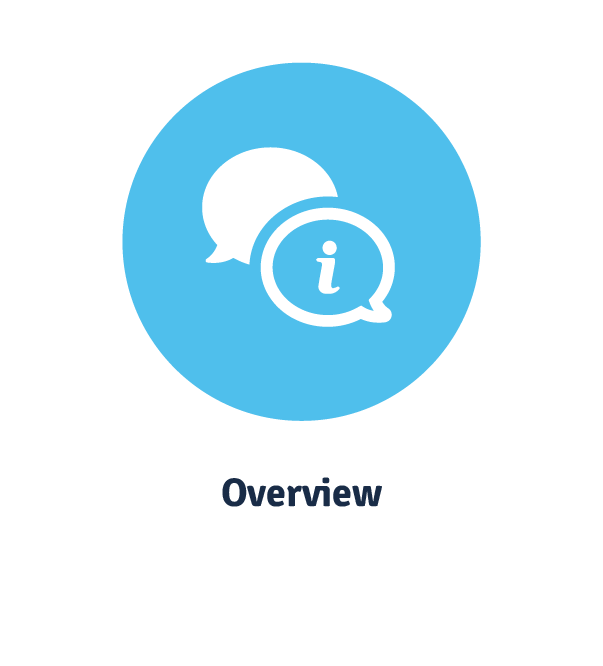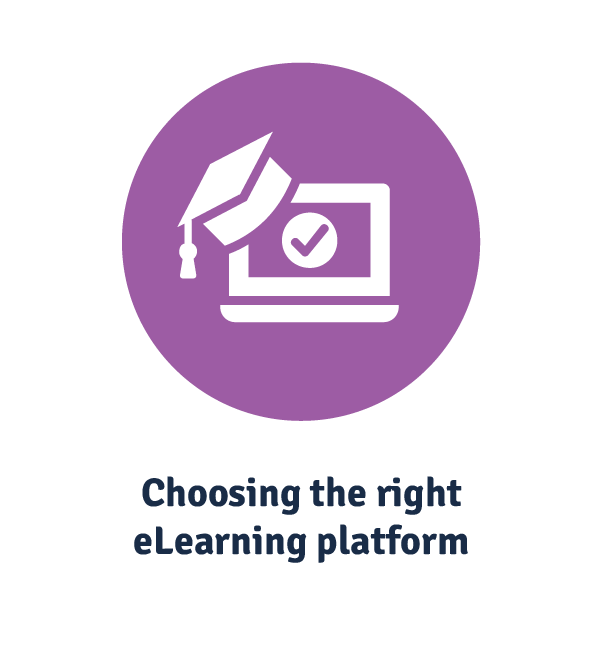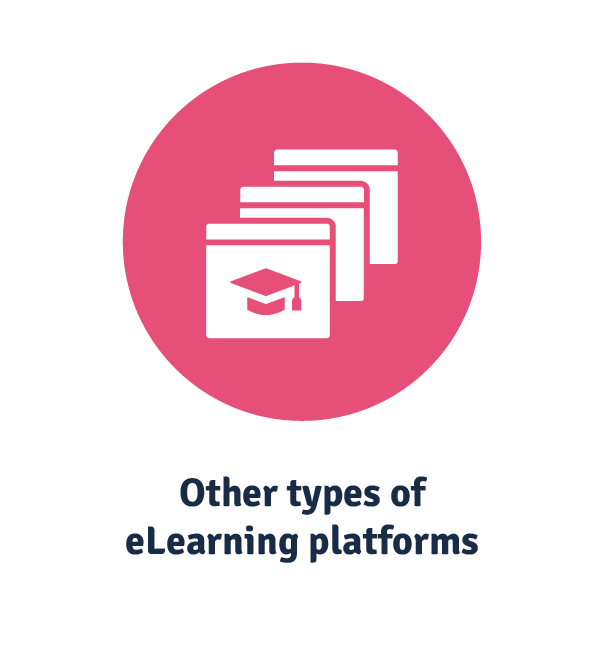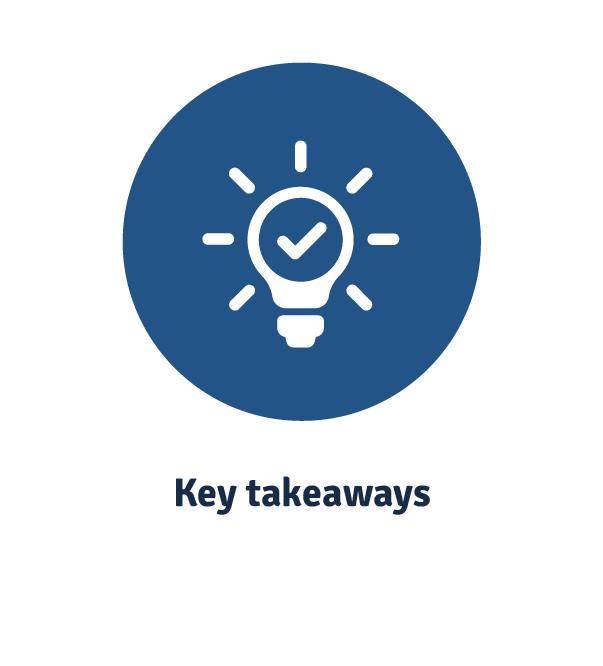The function of an eLearning platform is simple: It provides an easy way for learners to access training materials on the Internet while instructors and admin manage their courses.
As face-to-face education is not as viable an option as it once was, the need for an online learning solution is inescapable. However, there isn’t just one type of eLearning platform—which makes comparing suppliers and products more than a little confusing.
Never fear. We’ll walk you through everything you need to know about conducting an eLearning platform comparison, from the different types you may come across and the difference in functionalities between them, down to why you need to understand this when choosing an online learning solution.
We’ve also got a handy LMS Feasibility Study that’ll help you determine how practical these features may be when comparing suppliers and solutions.
Elearning platform comparisons can be tricky. Here’s everything you need to know
…no, seriously. From the obvious and the not-so-obvious to the annoyingly ambiguous factors, there’s a lot to unpack when your organisation is looking for an in-house training solution.
Broadly speaking, there are two classes of business and learning structure that your organisation may subscribe to. The first falls under the umbrella of commoditised content, and the second encompasses training for enterprises and small to mid-size businesses. There are always features and functions that can be used for multiple applications, but there are also distinct differences.
As just one example, eLearning platforms catered for training businesses usually offer more flexibility for storage, users, course creation and dashboards, often to accommodate the sheer number and variation of users purchasing content. On the other hand, corporations and businesses of average size commonly find platforms with secure access more suited to their privacy, security and scalability requirements.
Why this is important
We’ve found the biggest point of contention (and surprise, and influence) when comparing eLearning platforms is the almighty price divide. Platforms can cost as little as the manpower necessary to maintain them, all the way up to tens of thousands of dollars. When you’re only planning on onboarding 100 users for a few months, being locked into an eye-watering fixed rate per year will quickly deplete the resources you might need for content creation or to fund instructors.
And where there is some crossover of features and functionalities, not all platforms are made alike. In fact, not all eLearning products can even be described as platforms—meaning you could end up with a software program when you set out to procure a software system. There are restrictions on what different online learning products can do which may impact delivery of content and possible revenue for service-based businesses, or upskilling and succession planning in enterprises. So, yeah, it’s important to compare platforms to understand if they suit your industry, intended application and organisational needs.
Online learning platforms vs online course platforms
First, let’s look at the difference between two major eLearning players.
- Online learning platforms
- Online course platforms.
Simply put, an online course platform is a type of LMS, which is an online learning platform—but an online learning platform is not an online course platform. Confused? Allow us to explain.
Online learning platforms
Most of us use smartphones or other devices to access the Internet and interact with others everyday. An online learning platform leverages this by putting education on tap. Courses can be accessed anywhere, anytime and on any device through a digital space filled with educational content.
Online learning platforms can be self-directed and membership-based, like Udemy or Coursera, or used by organisations to facilitate training for their employees. YouTube is often used informally as a learning platform, though the most popular type of online learning platform is the LMS. These types of platforms are also known as online course marketplaces, as they allow learners to search and pay for a multitude of online training courses through the system. The emphasis is on the learner, making audience management much easier.
Essentially, you need an online learning platform if…
Your learners want a more flexible approach to education. The best online learning platforms offer immediacy, self-direction, breadth of knowledge and, most importantly, accessibility—in the one place. Even where online courses are mandatory, learners can access them in their own time.
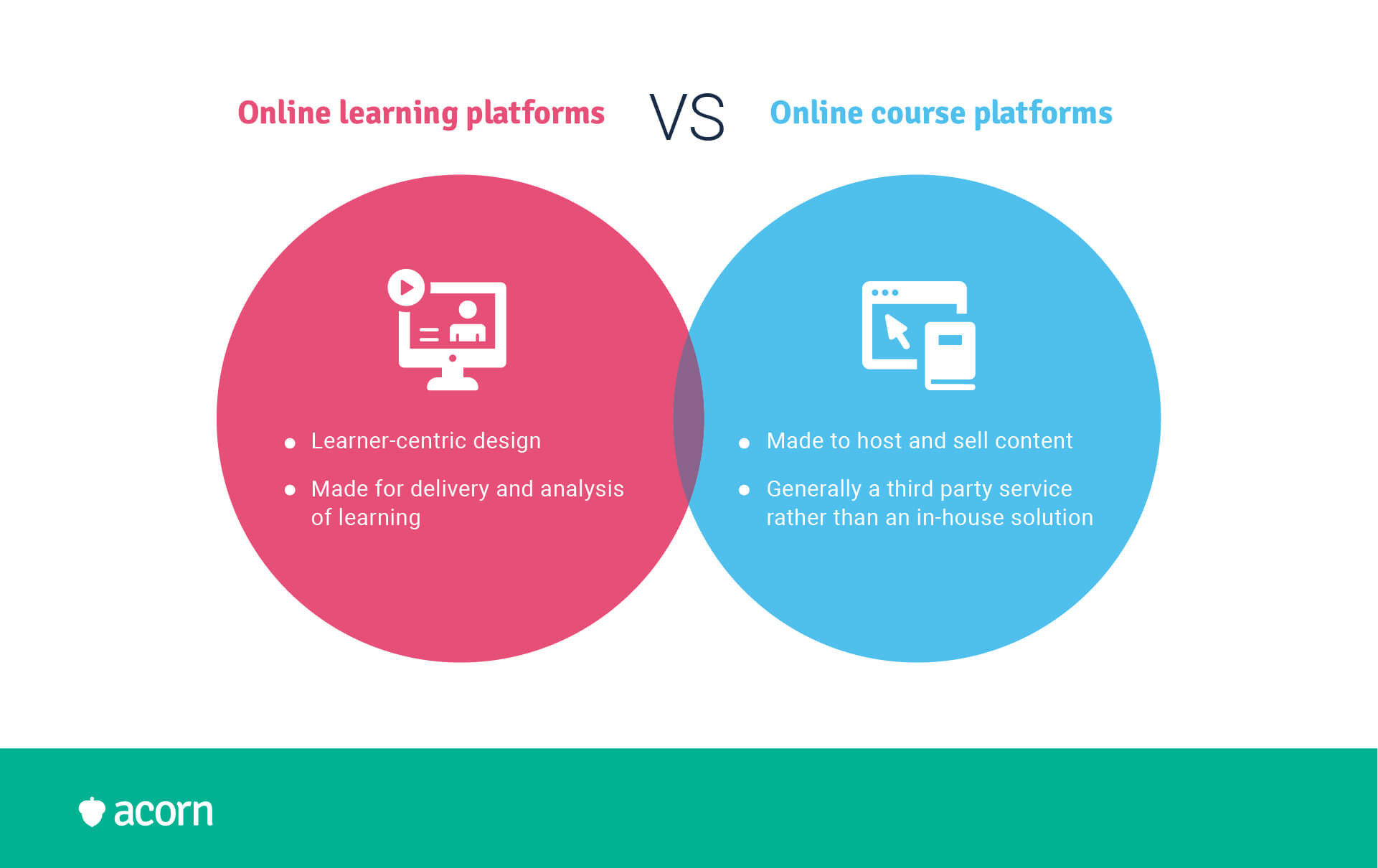
Online course platforms
Perhaps in your preliminary research you’ve happened upon the term ‘MOOC’? An online course platform is a specific form of LMS that gives access to massive open online courses, aka MOOCs. They are most commonly used by large educational institutions, from high schools and universities all the way up to the Smithsonian, to provide classes on writing, science, business and more.
MOOCs are most similar to traditional learning environments, in that a teacher provides a syllabus, with readings, assignments, weekly discussion material, lectures, and grading and feedback. Costs vary from free to monthly or yearly subscriptions, or fees per class. And, in comparison to the learner-friendly design of the online learning platform, this type of system focuses on instructors.
Essentially, you need an online course platform if…
You’re experienced in your field and want to sell your content as a service, but don’t want it lost in a saturated marketplace. The best online course platform for your needs should have the added benefit of complete control of user data, ensuring you keep all revenue.
Want to see Acorn PLMS in action?
Hit the book a free demo button here, take seconds to fill in your details, and find out how Acorn can help you succeed.
Choosing the right eLearning platform
Elearning platforms have diversified exponentially since they first appeared in the late ‘90s. Whilst this means more niche products, innovative features, industry-specific applications, and simply more choice for you, all that choice can make the market somewhat of a minefield to navigate.
No one-size-fits-all solution exists, but the purpose of an online learning platform remains the same: it should create a learning environment that feels like a traditional classroom experience, with the flexibility of online access. The right eLearning platform for your organisation, then, should suit not just the type of content you are hosting or creating, but your users’ learning needs. There are a few questions you should ask yourself (and your stakeholders) to determine criteria for selecting an online learning or course platform.

Why do you need a learning platform?
The most basic, and yet, strategic, step is to outline why you want an online learning solution in the first place.
Are you trying to grow your business? Pivoting to a remote working climate? Want to consolidate all training programs and professional development? Support more effective onboarding? The core goals or gaps you need met will determine the best online learning platform for you.
What are your learners’ needs?
At the heart of the equation are your learners, and understanding their expectations should be a driving factor in your decision. They might require more guidance and opportunity to interact with other users and instructors, or their work could be entirely self-directed. We’ve seen remote access becoming an increasingly crucial system requisite, to cater to a more distributed workforce.
Determining learner needs also defines the type of content you’ll create (if you’re creating online courses). You should consider if you want to author your own material or import it from a third party SME, because this impacts how you’ll source, organise, deliver and create courses.
What key features do you need?
Segueing on from your learners’ needs are the features you need to optimise the eLearning platform. You might require detailed learner analytics, full reign of customisation, comprehensive reporting tools or eCommerce tools. Again, these vary across products and suppliers, most significantly in costs.
Have you considered these as factors when determining a budget? We recommend consulting stakeholders from different departments or areas of expertise in your organisation to ensure their priorities are reflected in the features you come to enquire about in your request for proposal. Our LMS Feasibility Study document will also help you understand how realistically these may be integrated and utilised by your organisation.
Why this is important
Here lies the difference between scaling your business, upskilling employees, executing effective succession planning and increasing your ROI, and squandering time, money and resources on an ill-suited solution. Additionally, if you don’t involve stakeholders in this process, you may find yourself facing claims of bias by inadvertently choosing a solution that favours one department’s priorities over another—say, one with automated admin functions, so HR finds their job a little easier, but lacking supplier tech support that forces the IT team’s workload to skyrocket.
Types of eLearning platforms
Platform, system, program, tool, portal—all words that can be placed after the term ‘software’, but which all have very different meanings in the tech world.
Determining the right eLearning product for you will depend entirely on your planned application, who you intend to interact the most with the system, and the industry the vendor has experience in. If you need more guidance when selecting a solution that not only aligns with your needs but can also fulfill your requirements, download our LMS Feasibility Study Spreadsheet.
Learning management system
The purpose of an LMS is to deliver and track online training. It is a vast and centralised repository of not just learning materials, but learner analytics and workforce data. LMS facilitate and manage (hence the name) traditional and blended learning, such as assessments, workshops, feedback and grading, and social learning.
A key USP for many cloud-based learning management systems is how they integrate with existing internal systems, such as HR and payroll. This allows you to push and pull human capital data crucial to strategic workforce planning, such as demographics, capabilities, proficiency levels and career pathways.
Learning content management system
We’ve discovered businesses with passive learning as their wheelhouses lean towards learning content management systems (LMCS). These utilise authoring tools to create, design and manage single-source digital training material, i.e. content that can be used multiple times and in various instances.
Whilst good for learners (who get consistent terminology and information), LCMS are most beneficial to editors as single-source publishing allows all resources to be managed in the same location and format. It can then be easily revised and repurposed, meaning information is more accurate across versions and can be modified for smaller groups without impacting whole cohorts.
Authoring tools
Rather than an entire system, an authoring tool is a software program through which interactive eLearning content is created. This content is commonly used in an LMS. Authoring tools require no prior programming knowledge, as they are pre-programmed with a ready-to-use interface. That being said, beware some are geared towards those with specialist knowledge looking to create highly customised content using elements such as gamification.
Elearning portal
Where an LMS is a learning environment, an eLearning portal is a learning location. Hear us out: eLearning portals usually support designed pathways, such as onboarding, partner or consultant training, and compliance for off-site workers. As they are generally cloud-based, these are easier to widely distribute, provide more structured, and create a focused educational experience.
The key differences — and why you need to know them
In short?
- An LMS is an online learning marketplace which centralises training, analytics and reporting functions. As a learning platform, content is usually imported into and hosted by the system from an authoring tool or third party provider. And unlike an LCMS, they can be integrated with HR and payroll systems and have applications ranging from education to corporate training and consultancy.
- LCMSs ensure consistency of information across multiple versions of documents, while providing centralised control of data and flexible formatting. This is a major difference to the LMS, where content cannot be changed once imported in a particular format.
- Authoring tools are less platform and more software program. They are used to create content for LMS, and make up the system of an LCMS. Similarly, an eLearning Portal supports the greater educational environment of an LMS by providing a learning pathway focused on one topic.
If you’re unaware of these differences, you could find yourself procuring or still using outdated and inefficient software that doesn’t support your file types, number of users or accessibility requirements. Worse yet, you may find yourself paying for two different platforms or programs you could find for the price of one, and further trying to maintain a variety of software outside the realm of your technical scope. You’ll really feel the pain, though, when manpower is diverted to this from other pressing projects, budgets start to run over and enthusiasm for your online learning runs dry.
Key takeaways
As with tech, beauty products, furniture and cars, there are many different types of eLearning platforms that could feasibly serve your needs.
But your eLearning needs will be wholly different from the myriad of other buyers out there. If you don’t consider the business need for a platform, the learning and accessibility needs of users and the features that will accommodate those, you’re likely to find yourself locked into an expensive contract for an unhelpful tool.
Seek to understand the nuances of learning technology on your buying journey and you’ll find yourself with a platform that decreases business risks, optimises opportunities, engages users and gives you a solid return on investment. (No word of a lie.)
The new standard in learning Management
Related Reads on This Topic

Comparing Learning Content Management Systems
Not quite an LMS, definitely not a CMS or CRM… but still a solution to consider.

The Only Learning Management System Guide You Need
…Seriously. This isn’t light reading but it is the most comprehensive view you’ll get of the LMS.

Weighing Up Your LMS Options? We’ve Done the Hard Work For You
Everything you need to know about what each type of LMS can do and the oft-forgotten factors to consider.
